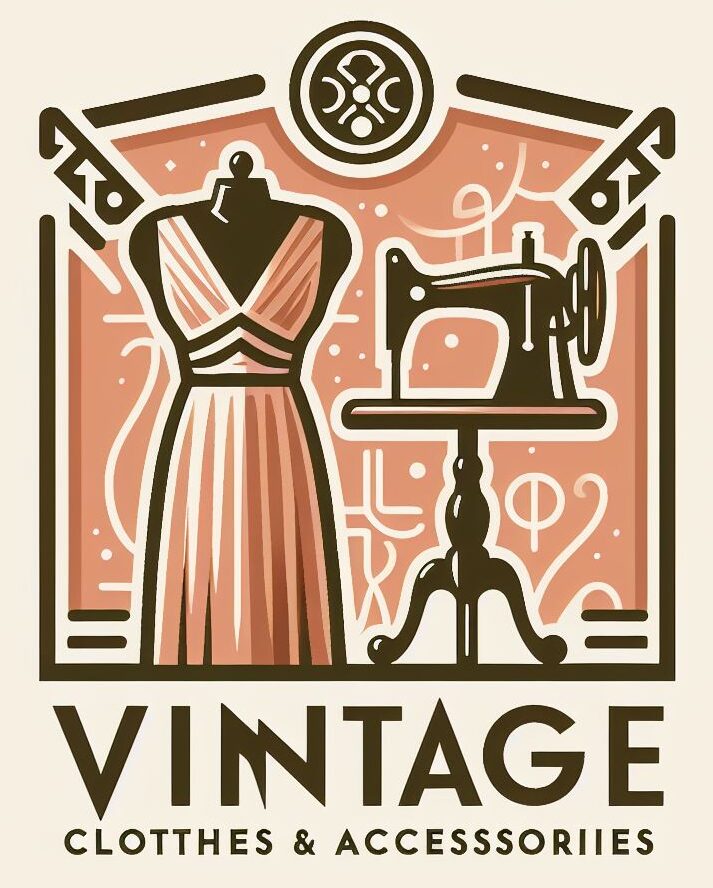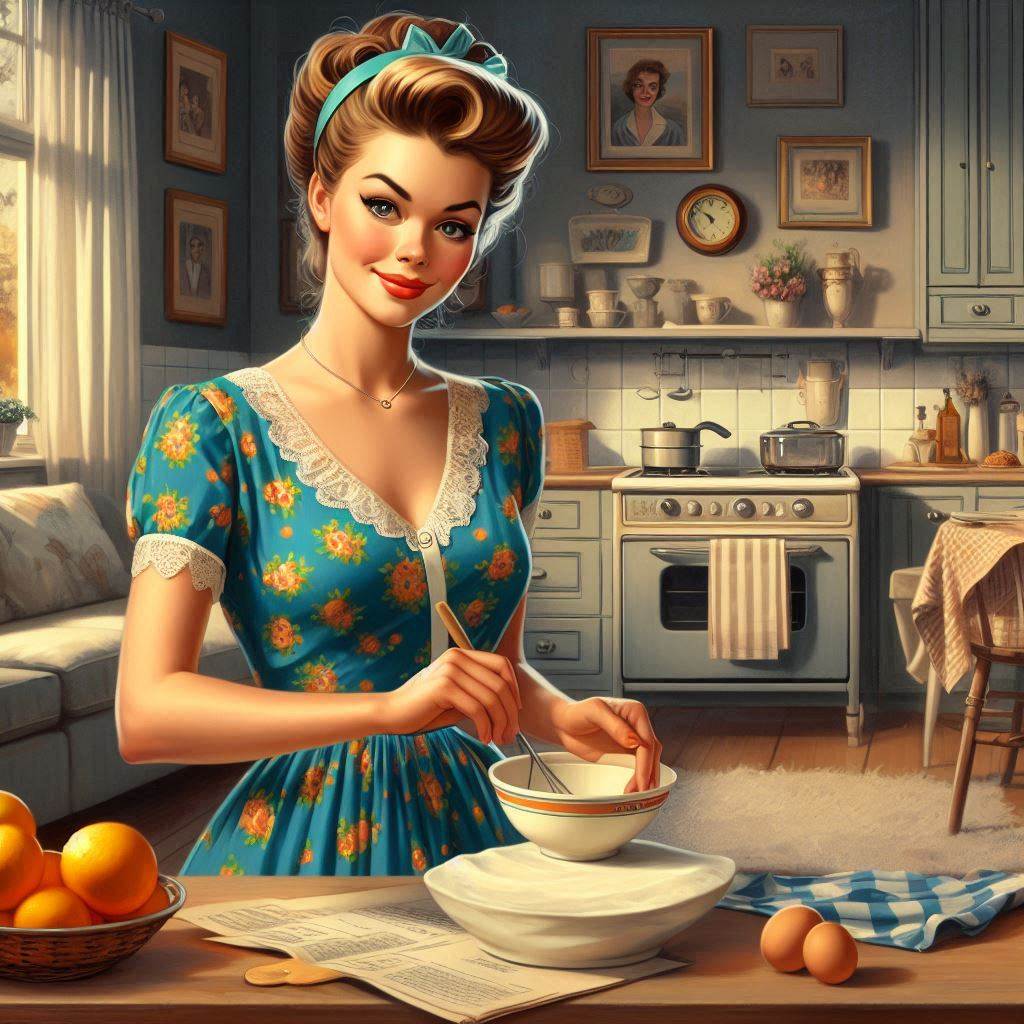
Timeless Comfort and Style: Classic 1950s House Dresses and Nighties
The Rise of Functional Fashion: How 1950’s House Dresses Revolutionized Everyday Wear
The 1950’s house dress revolutionized functional fashion by blending practicality with style, transforming everyday wear for women. Designed with homemakers in mind, these dresses prioritized ease of movement, comfort, and durability, essential for managing household tasks. But house dresses didn’t just serve a functional purpose; they were a fashion statement, offering a balance of femininity and utility that made women feel polished even while doing chores.
A key aspect of these house dresses was their practical features, like pockets, easy-to-care-for fabrics, and adjustable waistlines, which gave them an edge over earlier, more restrictive attire. Many were designed with full skirts for freedom of movement and often cinched at the waist – flattering various body shapes. Button-down closures made them easy to slip on, while cheerful prints and bright colors added a touch of personality and charm.
House dresses also played a role in redefining what “appropriate” clothing for women looked like. Prior to the 1950’s, many believed that women needed to dress formally even at home. However, the house dress provided an acceptable, yet relaxed alternative that could take women from cooking and cleaning to answering the door without feeling underdressed. This shift not only catered to the demands of daily life but also helped normalize a more casual and practical style of dress that women could wear proudly in public.
In many ways, the legacy of the 1950’s house dress lives on in today’s functional fashion, where clothing often combines practicality with style. Whether through work-from-home attire or versatile pieces for busy lifestyles, the emphasis on function, ease, with a bit of flair, remains. The house dress was, in a sense, an early influencer of today’s “smart casual” look—a reminder that style doesn’t have to come at the expense of comfort.
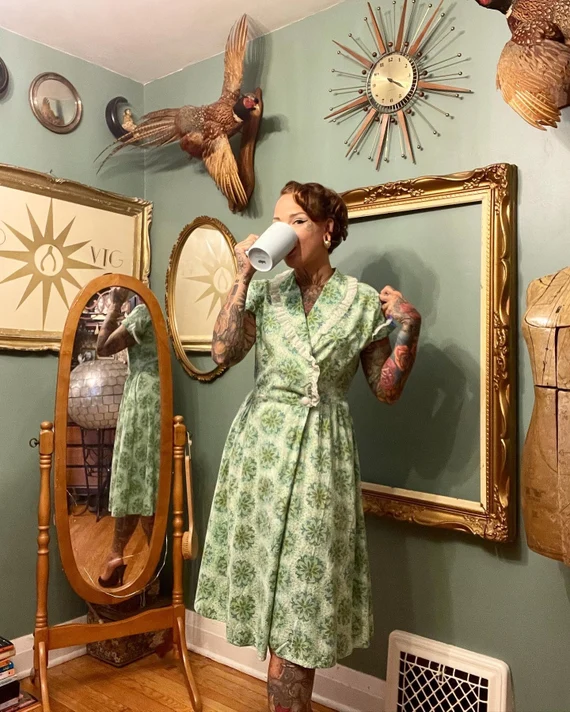
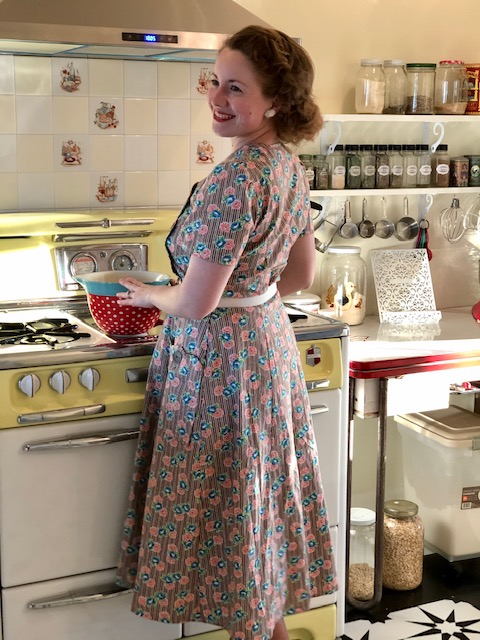
The Influence of Cinema and Media on Mid-Century Home and Nightwear Fashion
Mid-century cinema and media played a significant role in shaping home and nightwear fashion, as audiences admired and emulated the glamorous, cozy, and sophisticated looks popularized by stars on screen. Hollywood, in particular, had a substantial impact on these styles, with films and TV shows from the 1940’s through the 1960’s’influencing everything from fabric choices to silhouettes, colors, and finishing touches in home and sleepwear.
The Glamorous Silk Robe
Influence of Stars: Actresses like Rita Hayworth, Lauren Bacall, and Elizabeth Taylor brought elegance to loungewear with satin and silk robes. In films and public appearances, these robes featured lavish details like fur trimming, embroidery, and rich colors that embodied sophistication.
At-Home Luxury: Women across the U.S. adopted similar styles, seeing luxurious nightwear as a way to bring Hollywood glam into everyday life. Silk and satin became synonymous with elegance, and robes in jewel tones and soft pastels became mainstays in women’s wardrobes. Vintage inspired glamourous silk robes – available through Etsy today – find your perfect style here.
Pajama Sets and the Relaxed Look
The Rise of Pajama Sets: Cinema and television portrayed pajama sets in comfortable yet stylish ways, thanks to stars like Audrey Hepburn, whose effortless style encouraged women to embrace button-down pajama tops with matching pants. Pajama sets in soft cotton and breathable rayon became popular for their comfort and practicality, embodying the casual, understated elegance seen in many mid-century films. Classic pajama sets are found at Etsy – shop your style today.
TV’s Influence: Sitcoms and shows featuring “ideal” family life, such as I Love Lucy, made matching pajama sets for couples and families a common and appealing aesthetic. Bright colors and playful patterns like polka dots and stripes became fashionable and accessible to a wide audience base.
The Babydoll Nightgown
Iconic Designs on Film: Babydoll nightgowns, with their short, airy cut and playful designs, became widely popular during the 1950’s and 1960’s, partly due to their appearance in movies featuring young, fashionable women. You can find some authentic styles here online through Etsy – shop today. Some vintage inspirations can be found at Amazon – look through these styles to find yours now.
Appeal in Mainstream Fashion: Often seen on stars like Marilyn Monroe, the babydoll nightgown added a mix of innocence and sensuality to nightwear – appealing to younger audiences. Light fabrics, lace trims, and pastel colors were especially popular, resonating with a playful yet stylish aesthetic that many young women wanted to capture.
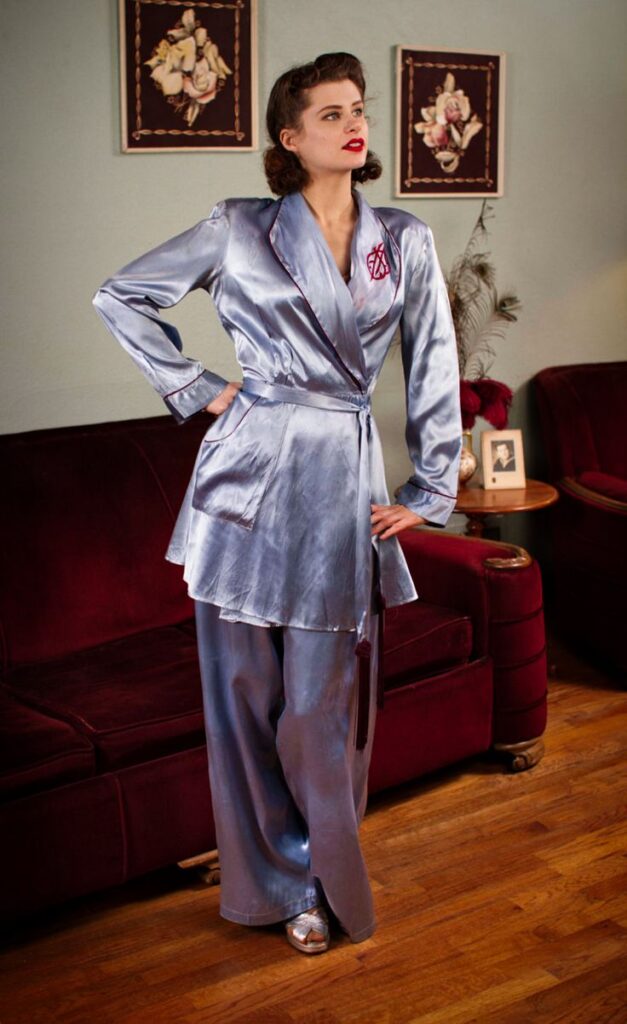

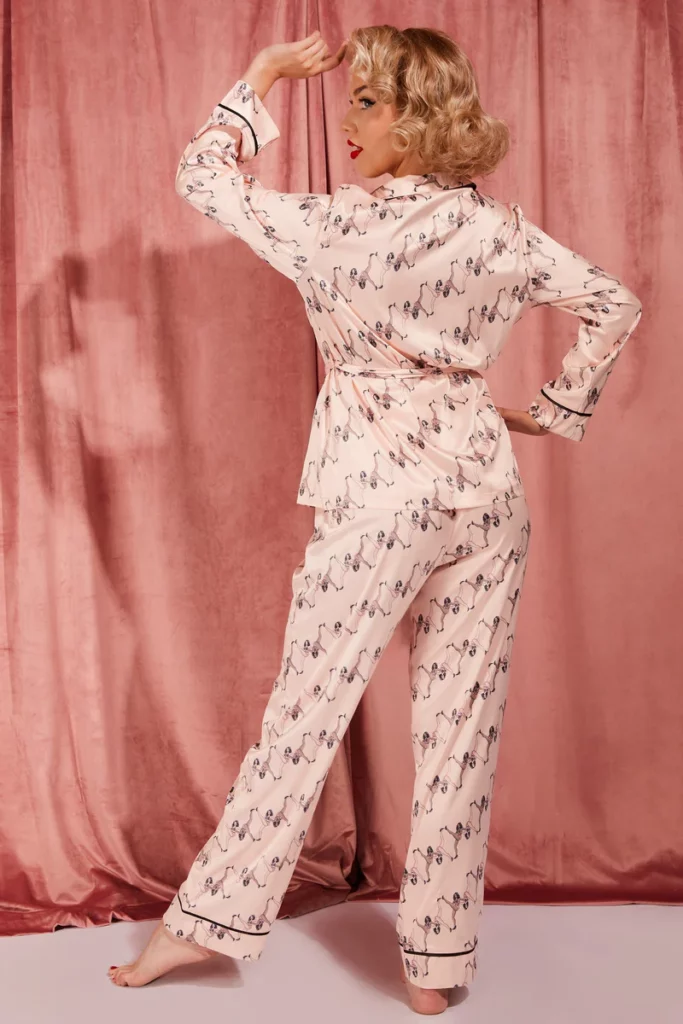
Men’s Leisurewear and the Smoking Jacket
Influence of Classic Leading Men: Stars like Cary Grant and Humphrey Bogart were often depicted in lavish, velvet smoking jackets and silk pajamas that conveyed refined masculinity and sophistication. These pieces became the hallmark of men’s home attire and symbolized status, relaxation, and style. A large selection of these smoking jackets and dressing gowns are located through Etsy’s range today.
Mainstream Adoption: Velvet smoking jackets and sophisticated nightwear became aspirational for many men, encouraging them to adopt more polished, tailored pieces for at-home wear. Fabrics like flannel, wool, and silk were favored, aligning with a timeless look influenced by the cinema’s portrayal of affluent gentlemen. Shop for velvet smoking jackets here at Etsy.
House Dresses and Practicality in Homewear
The Functional Influence of Media: Practical yet stylish house dresses became popular, especially as women in media often portrayed homemakers who balanced fashion with functionality. Films and TV shows showcased house dresses in cheerful prints and easy-to-maintain fabrics like cotton, promoting a look that was both sensible and chic. You can buy vintage house dresses and other casual house attire – online today.
Popularity Among Housewives: This led to the widespread adoption of the house dress as a staple in mid-century homes. Featuring cinched waists, buttons, and often floral patterns, these dresses combined feminine style with convenience, shaping a distinctive look that reflected the era’s values. Modern interpretations of the house dress can be seen at Amazon – leisure dresses for seemingly casual attire found here.
TV’s Role in Shaping Cozy Family Looks
Matching Family Nightwear: The “perfect family” aesthetic promoted in mid-century TV shows led to the rise of coordinated family pajama sets, with matching patterns and colors for each member. Shows like The Donna Reed Show reinforced this cozy, unified look, promoting matching or complementary sleepwear for the whole family as a symbol of closeness. Shop today for matching family PJ sets right here online.
Seasonal Influences: Around holidays, themed pajamas with festive colors and designs became more popular, particularly as television advertisers began to promote holiday specials, fostering the idea of family unity through matching seasonal sleepwear. Alternative styles are located at Etsy – look at the selections available here.
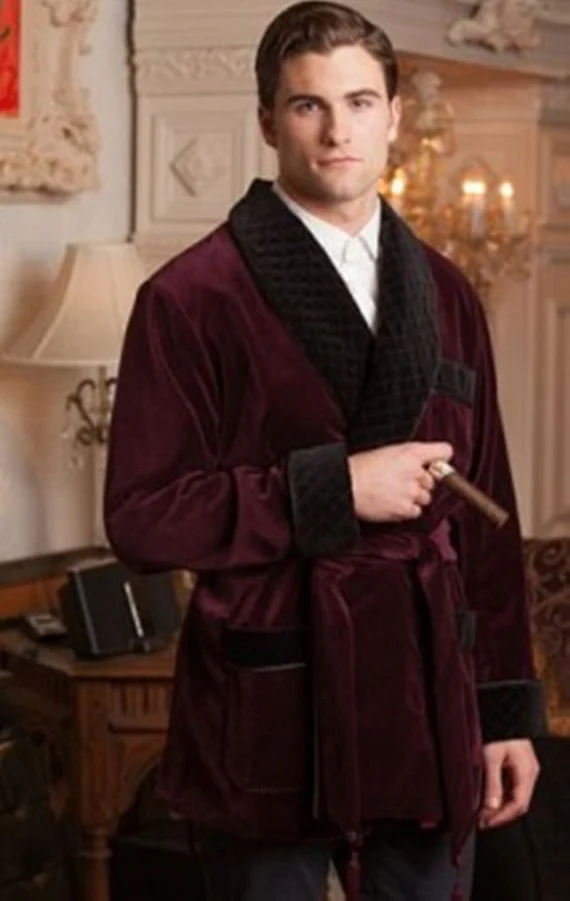
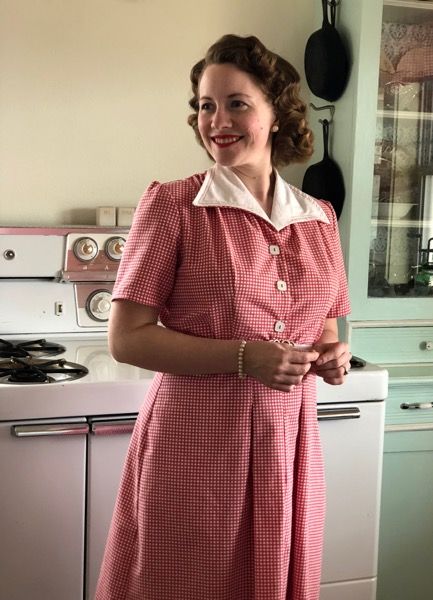
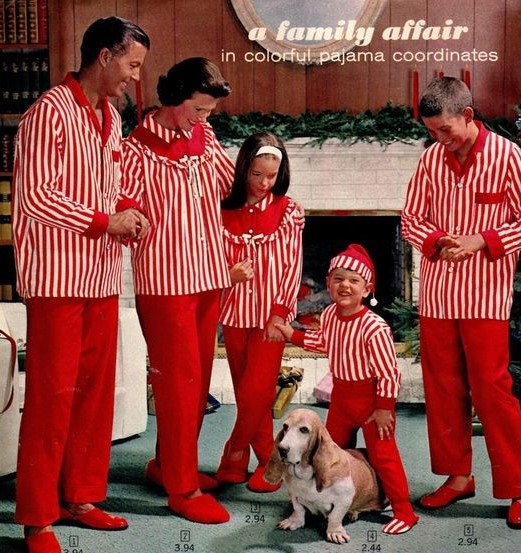
The influence of cinema and media on mid-century home and nightwear fashion was profound, with screen stars, popular TV shows, and the portrayal of the “ideal” home inspiring people to adopt stylish, comfortable, and often luxurious home attire. The trends set during this era still echo today in the classic and timeless loungewear and sleepwear styles we see across various fashion spheres.
Navigating the Day and Night with Grace: A Typical Wardrobe Transition for Mid-Century Women
For mid-century women, style was all about seamlessly transitioning from day to night while maintaining an air of elegance. There were several outfit changes in the day – not common in modern society. We breakdown what the typical wardrobe transitioned in that era:
Morning to Early Afternoon: Daywear
Style Focus: Polished, practical, and refined
Dresses and Skirts: During the day, women often wore simple yet flattering dresses or skirt suits, featuring structured silhouettes and cinched waists. Common materials included cotton and wool blends, often in checks, florals, or soft pastels.
Accessories: A small handbag, modest gloves, and a simple strand of pearls were common. Shoes were low-heeled pumps or flats, prioritizing comfort for activities like errands or social calls.
Outerwear: Cardigans or fitted blazers complemented the look, along with a hat for outdoor wear, typically a pillbox or a cloche style.
Late Afternoon to Early Evening: Transitioning to Semi-Formal
Style Focus: A touch of sophistication
Dresses and Suiting: Women would often add a little more structure by switching to a tailored sheath dress or a polished suit with more intricate detailing, like piping or contrasting trims. Colors became slightly darker and richer as the day progressed.
Accessories: Gloves became more elaborate, often reaching the elbow, and jewelry choices might include brooches or bracelets. Small heels or kitten-heel shoes offered a balance of elegance and ease for early evening events.
Outerwear: Lightweight coats in elegant fabrics, like wool or brocade, would be worn as the temperature dropped, adding a sense of formality.
Evening to Night: Glamorous Evening Wear
Style Focus: Formal, luxurious, and eye-catching
Gowns and Evening Dresses: For dinner parties, formal events, or evenings at the theater, evening gowns were the norm. These dresses showcased details like tulle, lace, sequins, or satin in rich, deep colors such as navy, emerald, or burgundy.
Accessories: Long gloves, sparkling statement jewelry, and a petite evening clutch were essential. Footwear included high heels in satin or patent leather.
Outerwear: A fur stole, wrap, or bolero completed the ensemble, offering a glamorous touch that showcased her poise.
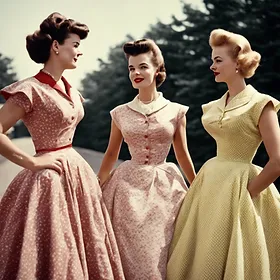
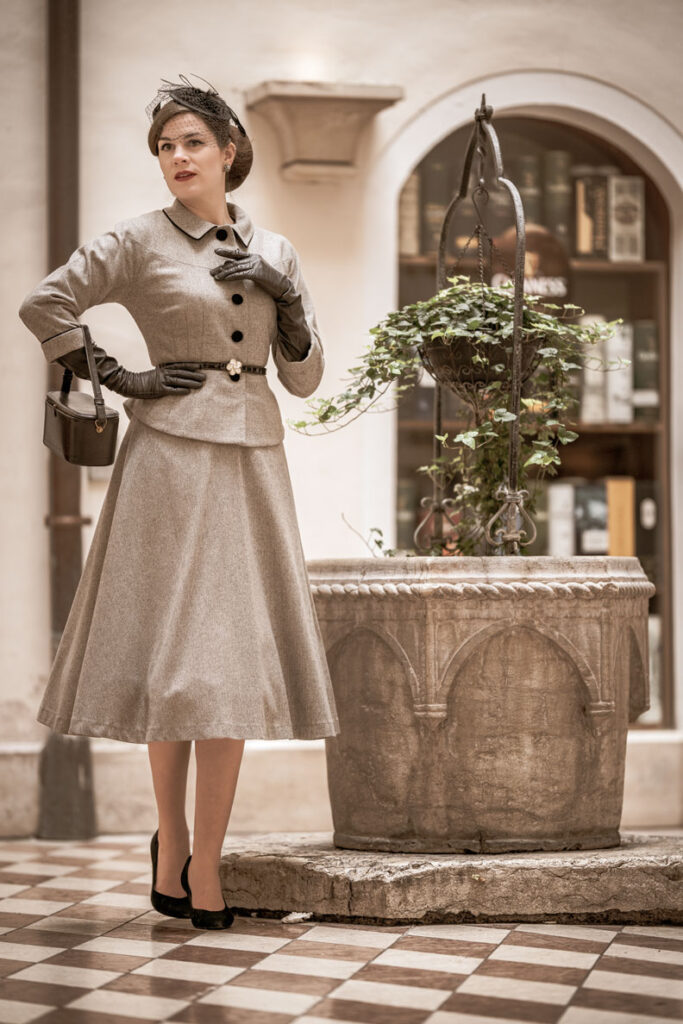
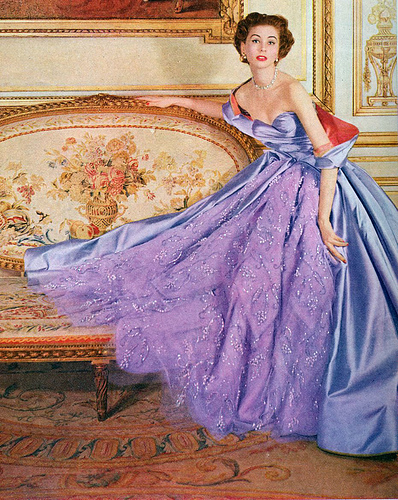
Signature Touches for a Day-to-Night Wardrobe
Makeup: Morning makeup was natural and fresh, with soft pinks and minimal eyeshadow. By evening, lipstick deepened to reds or berry shades, and eyeliner became more pronounced for an elegant look.
Hair: Hair would be styled in structured waves or a polished chignon during the day and might be refreshed with more volume and curl for the evening.
This mid-century wardrobe approach ensured that women moved through their day in style, each outfit crafted with elegance and ease to match the occasion.
The Role of Night Wear in Defining Femininity in the 1950s: Nighties as a Gentle Fashion Statement
During the 1950’s, nightwear played a unique and subtle yet powerful role in defining femininity, particularly through nightgowns, or “nighties.” This era was marked by a renewed focus on traditional domestic roles and the ideals of elegance and demure beauty. Nightwear became an extension of daywear, reflecting the same values of grace, modesty, and gentle allure, but in a more intimate setting.
Nighties of the 1950’s were often crafted from delicate, flowing fabrics such as silk, satin, and nylon, embodying a soft, romantic aesthetic that gently accentuated a woman’s figure without overtly revealing it. The styles ranged from floor-length, modest designs with lace-trimmed hems to shorter baby-doll cuts that hinted at playfulness and a sense of innocence. Colors tended toward pastel shades—soft pinks, blues, and creams—which enhanced the notion of femininity as soft and gentle. Embellishments like lace, embroidery, and tiny ribbons added a luxurious touch, elevating the nightgown from a mere garment to a symbol of sophistication and grace.
As an affiliate - I may receive a small commission when you click on a link to purchase an item.
The appeal of 1950’s nightwear was also linked to the idea of the “ideal woman” of the time—poised, nurturing, and refined. Women’s magazines of the era often presented the idealized image of women as elegant homemakers, maintaining beauty even in the private sphere. This created a cultural expectation that femininity was not only a public performance but also something to be upheld in intimate moments, reinforcing traditional gender roles and the idea of the “feminine mystique.” Nighties served as a bridge between public elegance and private intimacy, giving women a way to express their femininity quietly and decorously, even in solitude or within the home.

Thus, nightwear in the 1950’s was not merely functional; it was a gentle fashion statement, a way of embodying and embracing femininity according to the era’s ideals. The understated elegance and intentional modesty of these garments reinforced societal expectations of women and femininity, creating a unique blend of style, tradition, and personal expression that defined the time.
Colors, Patterns, and More: What Made these Garments the Epitome of 1950’s Style
The 1950’s brought a wave of fashion that remains iconic – characterized by vivid colors, bold patterns, and tailored silhouettes that celebrated the hourglass figure. Here’s what set this decade apart and what made it so unforgettable:
Vibrant Colors
Pastels and Bold Hues: Popular colors included powder pink, mint green, baby blue, and lemon yellow for daytime wear, while bold hues like red, emerald green, and navy were reserved for evening looks.
Monochrome Moments: Black-and-white color schemes were often seen in checkerboard or polka dot patterns, adding a retro-chic contrast to wardrobes.
Playful Patterns
Polka Dots and Stripes: Polka dots became a staple of 1950’s fashion – gracing dresses, skirts, and blouses -including nightwear. Stripes, both thick and thin, gave garments a fun, nautical twist.
Gingham and Florals: Gingham check patterns, especially in dresses and skirts, were synonymous with 1950’s style. Floral prints, ranging from dainty rosebuds to bolder blooms, also became popular, with nighties.
Silhouettes and Shapes
Hourglass Emphasis: Dresses often featured a fitted bodice with a cinched waist and a voluminous skirt – emphasizing the hourglass shape. The “New Look” silhouette, pioneered by Dior in 1947, continued to dominate throughout the decade.
Pencil Skirts and Circle Skirts: Pencil skirts added a sleek, refined look, ideal for work or formal outings. In contrast, circle skirts were wide – with layers of crinoline underneath for volume, ideal for dances and casual settings.
Peplum Accents and Capelets: Peplums created additional volume at the waistline, enhancing curves, while capelets added a touch of elegance and drama to outerwear.
Fabrics and Textures
Luxe Textiles: Fabrics like silk, satin, and tulle were often used for evening wear, creating a luxurious feel. For daytime, cotton and wool blends made garments practical yet stylish.
Embellishments: Embroidery, bows, and lace added feminine touches to everyday garments, while beadwork and sequins made evening dresses sparkle.
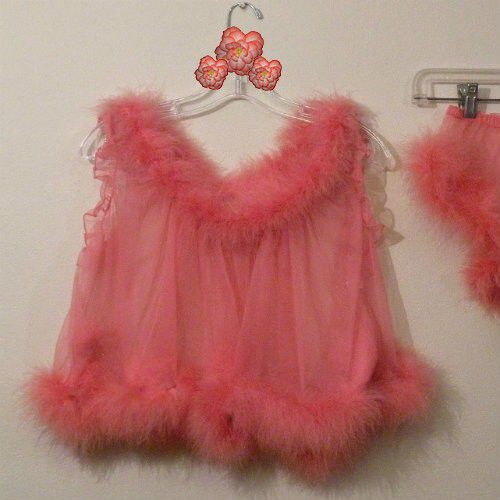
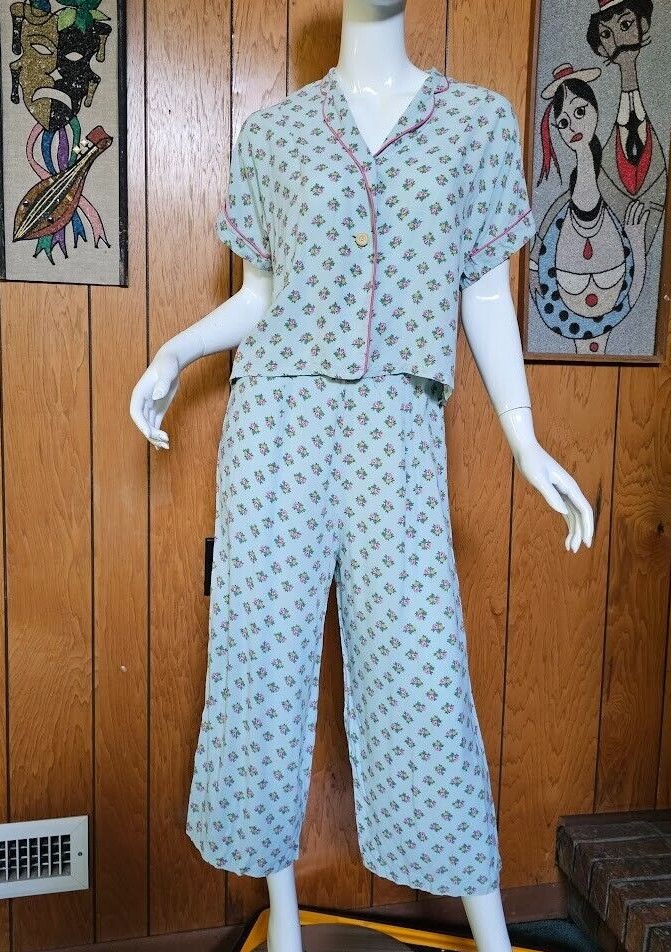
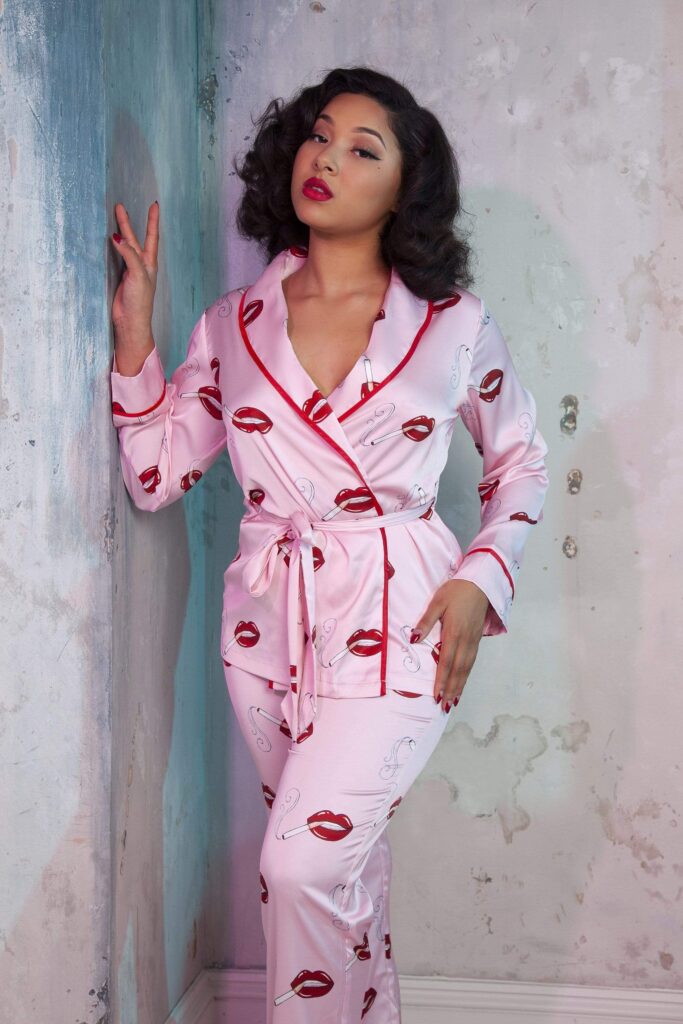
The 1950’s style remains a blend of femininity, fun, and sophistication, where colors and patterns worked in harmony with perfectly structured silhouettes. It’s a look that continues to inspire vintage enthusiasts and modern-day fashion alike.
Cultural and Social Impacts: How House Dresses and Nighties Reflected Post-War America
In post-World War II America, house dresses and nightgowns became symbols of shifting cultural values and social dynamics – particularly concerning the roles and expectations of women. Here’s a refection of how these garments mirrored and influenced the social landscape:
Emphasis on Domesticity and Femininity
- After WWII, American society encouraged women to return to domestic roles after many had entered the workforce during the war. House dresses and nighties embodied the ideal of the “domestic housewife” – blending practicality with a renewed emphasis on femininity.
- House dresses were designed to be both functional and flattering, allowing women to move comfortably while managing household tasks. They often featured prints, bright colors, and silhouettes that balanced style with ease.
- Nightgowns reflected a soft, romanticized image of femininity, often featuring lace, frills, and delicate fabrics. These designs signaled a cultural emphasis on looking put-together and attractive within the home, reinforcing the notion that women should maintain an aura of beauty and care even in private settings.
Consumerism and the Rise of Ready-to-Wear Fashion
- The post-war economic boom fueled a consumerist culture, and ready-to-wear house dresses and nightgowns became widely available and affordable.
- Fashion companies saw an opportunity to market to housewives, promoting the idea that a wardrobe of beautiful yet practical home attire was part of the “American Dream.”
- Advertising campaigns highlighted these garments as essential to a woman’s life, linking consumerism with identity, family stability, and social status.
Identity and the Role of Women
- The popularity of house dresses and nightgowns subtly reinforced traditional gender roles. Many advertisements depicted women looking happy and fulfilled within the domestic sphere, suggesting that housework was glamorous and that a tidy, stylish appearance was tied to personal worth.
- While these garments symbolized conformity to societal expectations, they also offered women a form of self-expression. Fabrics, colors, and patterns allowed women to choose pieces that felt unique and personal within the confines of prescribed roles.
Shift in Design and Practicality
- Designers began making homewear with synthetic fabrics like nylon, making them more durable and easy to wash—appealing qualities for busy housewives. This practicality meant that women could keep up appearances without the extensive labor of traditional garment care.
- The loose, relaxed fit of these garments also aligned with a trend towards more casual, comfort-driven clothing as Americans moved away from the formality of earlier decades.
The Emergence of Women’s Magazines and Media Influence
- Magazines such as Ladies’ Home Journal and Good Housekeeping became popular channels for promoting domestic fashion trends, presenting the house dress and nightgown as part of a woman’s identity.
- Hollywood further glamorized house dresses and nightgowns, with actresses depicted in chic homewear that became aspirational for everyday women – reinforcing both the roles and styles endorsed by society.
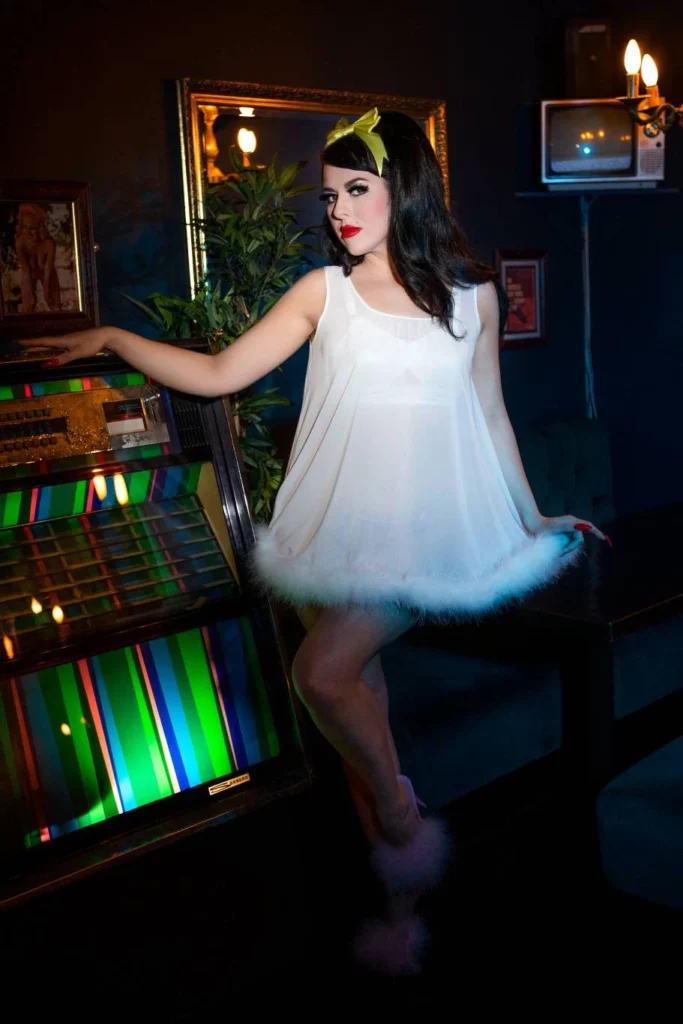
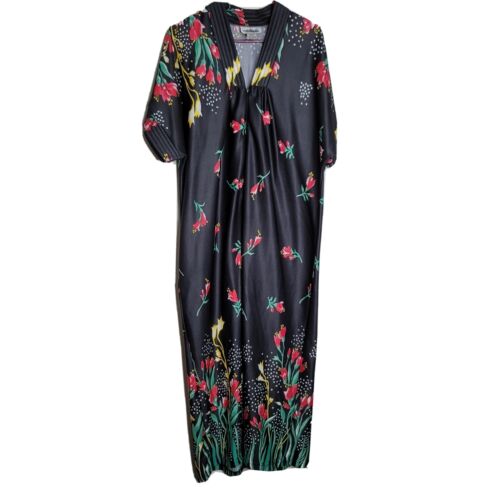
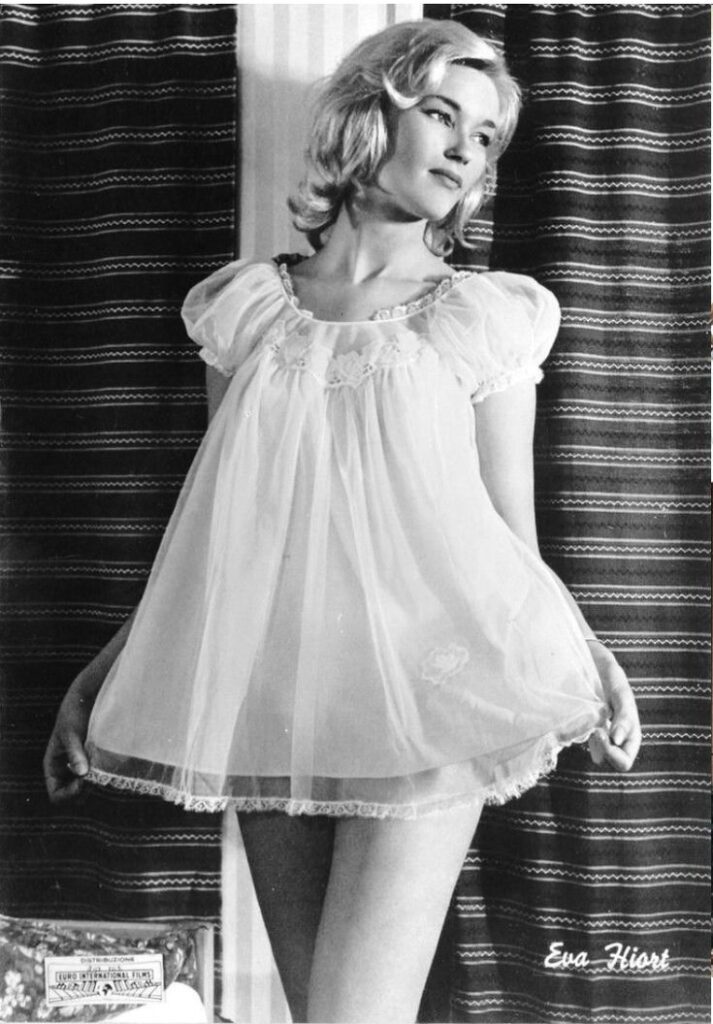
These garments, at first glance merely functional, became symbols of the cultural values of the time, representing the complex intersection of femininity, domesticity, and consumerism in post-war America.
Timeless Appeal: Why 1950’s Housewear Still Captivates Fashion Enthusiasts Today
Housewear styles from the 1950’s continues to captivate fashion enthusiasts due to its timeless appeal, practical designs, and effortless elegance that embody a distinctive blend of femininity, grace, and functionality. Here are several key reasons why this era’s fashion remains a staple in modern wardrobes:
The Allure of Feminine Silhouettes
- The 1950’s housewear is synonymous with tailored, waist-cinching silhouettes like A-line skirts and dresses that accentuate an hourglass figure. This flattering shape, coupled with structured bodices – highlights a timeless beauty that continues to inspire today’s feminine fashion trends.
- The era’s classic designs make these pieces versatile enough for both casual and formal occasions – appealing to those who appreciate a structured yet comfortable style.
Emphasis on Practicality and Comfort
- This 1950’s housewear was designed with practicality in mind – making it ideal for homemakers managing daily tasks while still looking polished. Comfortable cotton, linen, and breathable materials used in 1950’s fashion are durable yet soft, offering flexibility and a home-friendly approach that resonates in today’s casual wear.
- Dresses with pockets, wrap dresses, and full skirts allowed freedom of movement—features that have made their way back into modern clothing, celebrated for both convenience and aesthetic appeal.
Vintage Quality and Craftsmanship
- Clothing from this era is often highly valued for its craftsmanship, reflecting an era when garments were designed to last. This commitment to quality appeals to the eco-conscious consumer today who values sustainable, long-lasting pieces over fast fashion.
- From sturdy stitching to quality materials, retro garments hold up well over time, making vintage items from this era a worthwhile investment for those interested in quality and durability.
Nostalgia and Cultural Iconography
- The 1950’s evoke an iconic period marked by classic Hollywood starlets like Audrey Hepburn and Marilyn Monroe, who popularized the era’s housewear as something chic rather than utilitarian. This sense of nostalgia is appealing, making admirers feel connected to a past era of grace and charm.
- Wearing 1950’s-inspired clothing allows people to channel a sense of nostalgia, bringing a slice of retro glamour into the modern age.
Celebration of Color and Patterns
- The 1950’s saw the rise of bold patterns, polka dots, gingham, and floral prints that add a playful touch to housewear. These fun, vibrant patterns lend themselves well to contemporary fashion, offering a refreshing alternative to the often minimalistic trends of today.
- Bright colors and lively patterns from the 1950’s bring warmth and personality, appealing to those who seek to stand out and add a touch of vibrancy to their everyday wardrobe.
Influence on Modern-Day Fashion Designers
- Contemporary designers continually draw inspiration from the 1950’s, incorporating its elements into new collections. From Dior’s “New Look” which defined the decade to more recent lines that reimagined retro styles. The 1950’s influence in fashion still remains strong.
- Fashion houses often reinterpret 1950’s style for its sophistication, timelessness, and versatility – creating collections that appeal to both vintage enthusiasts and mainstream fashion lovers alike.
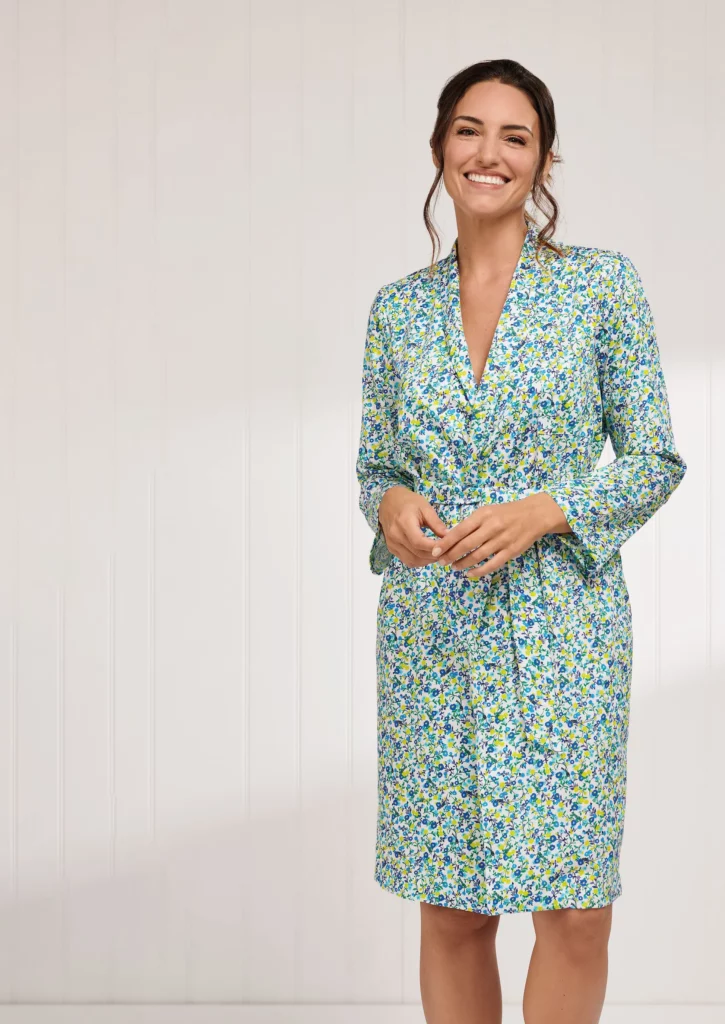
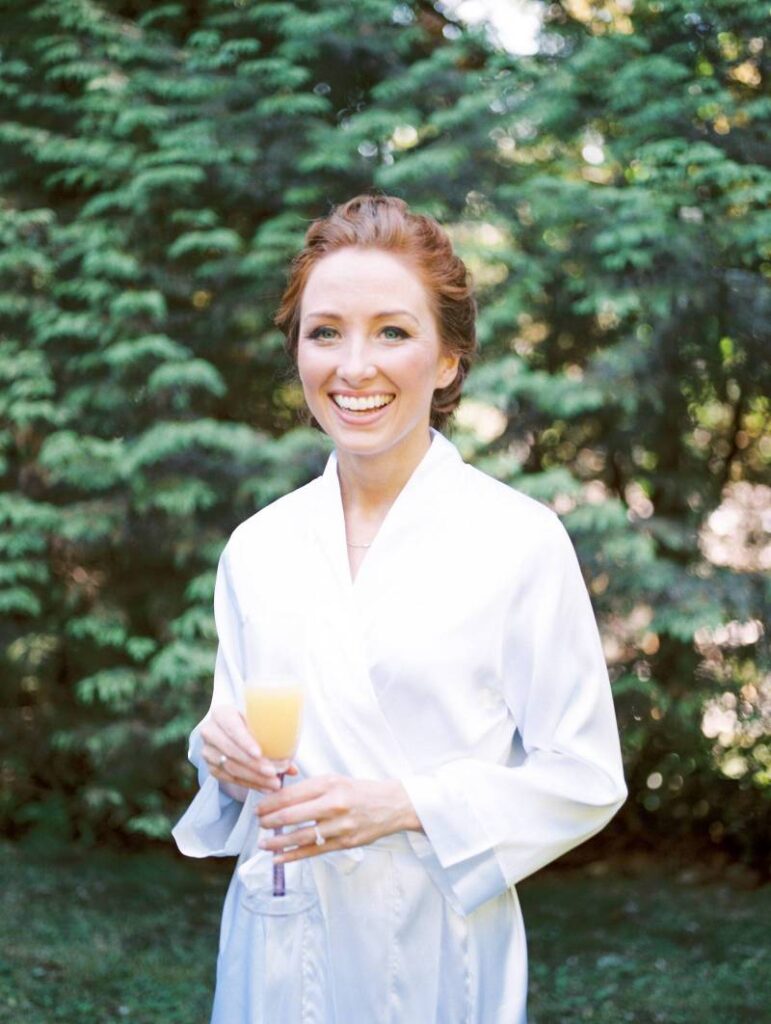
In today’s fashion world, where comfort, quality, and self-expression are prized – the 1950’s housewear style offers a refreshing balance of elegance and practicality that remains highly relevant.
THIS HAS BEEN A FUN TOPIC TO COVER AND CERTAINLY BRINGS BACK MEMORIES OF THESE CLASSIC BABY DOLL NIGHTIES AND HOUSE DRESSES – THANKS FOR READING MY POST ON THEM.
Leave a message below, or follow us directly on our socials here:
Regards Helen
